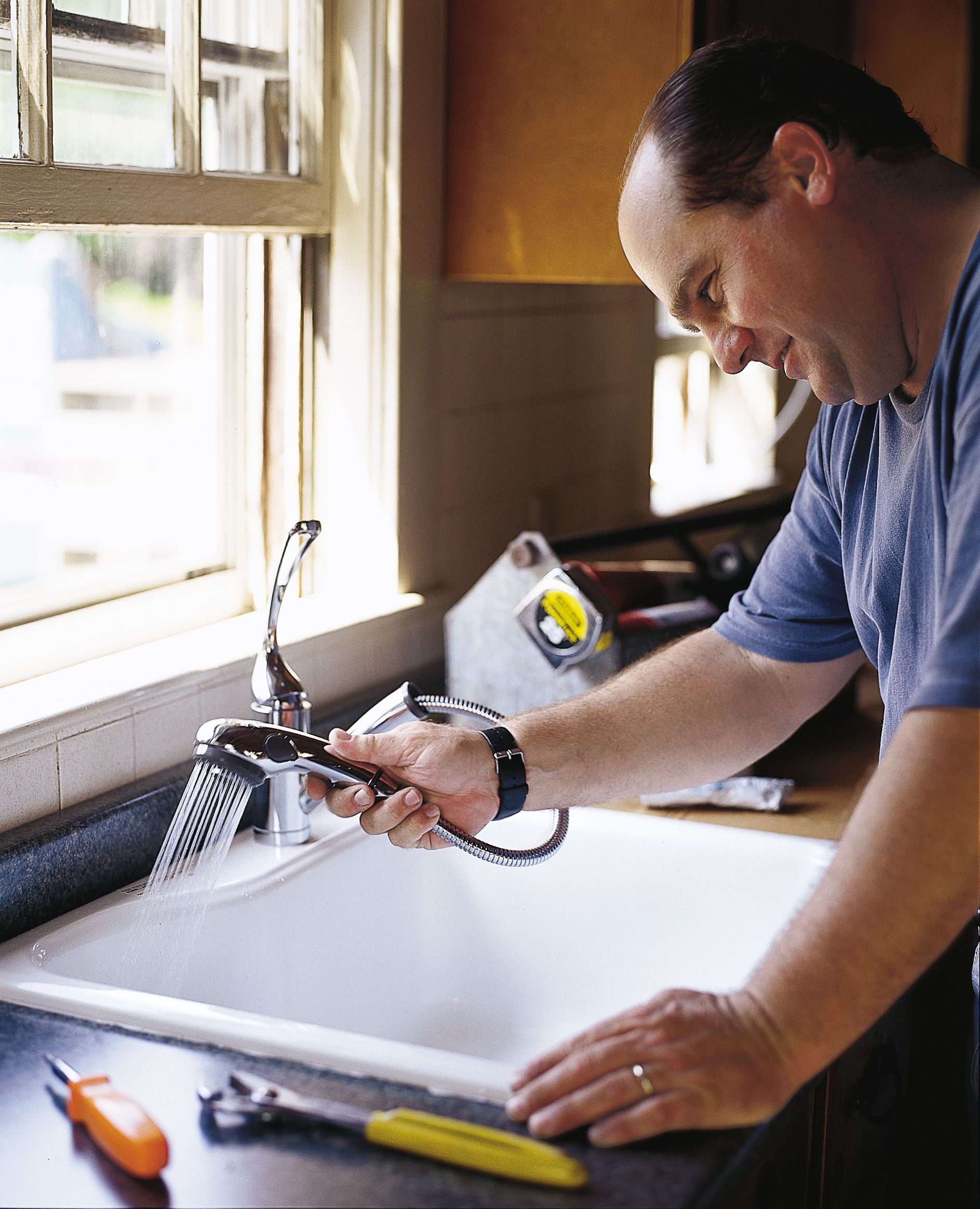Project details
Skill
Cost
Estimated Time
Installing a new, high-quality sink can revitalize your kitchen’s look. It’s definitely possible to complete this project on your own, but you’ll need to make sure you’re well-prepared. Our step-by-step guide will walk you through the process, from the tools and materials you’ll need to the regular maintenance that will keep your new sink working properly.
Kitchen Sink Installation Tools and Materials
Below are the tools and materials needed for your kitchen sink installation.
 Tubing cutter
Tubing cutter Jigsaw
Jigsaw Drill/driver
Drill/driver Screwdriver
Screwdriver Mechanic’s pliers
Mechanic’s pliers Adjustable wrench
Adjustable wrench Tape measure
Tape measure Hacksaw
Hacksaw Utility knife
Utility knife Straight edge
Straight edge Spade bit
Spade bit
9 Steps To Install a Kitchen Sink
The instructions below assume you’re beginning with a blank slate. If you only need to replace an existing sink, you can remove the old sink and jump straight to step four.
The above video provides a visual overview of how to install a kitchen sink. You can read about each step in more detail below.
Step 1: Measure and Mark the Sink Layout
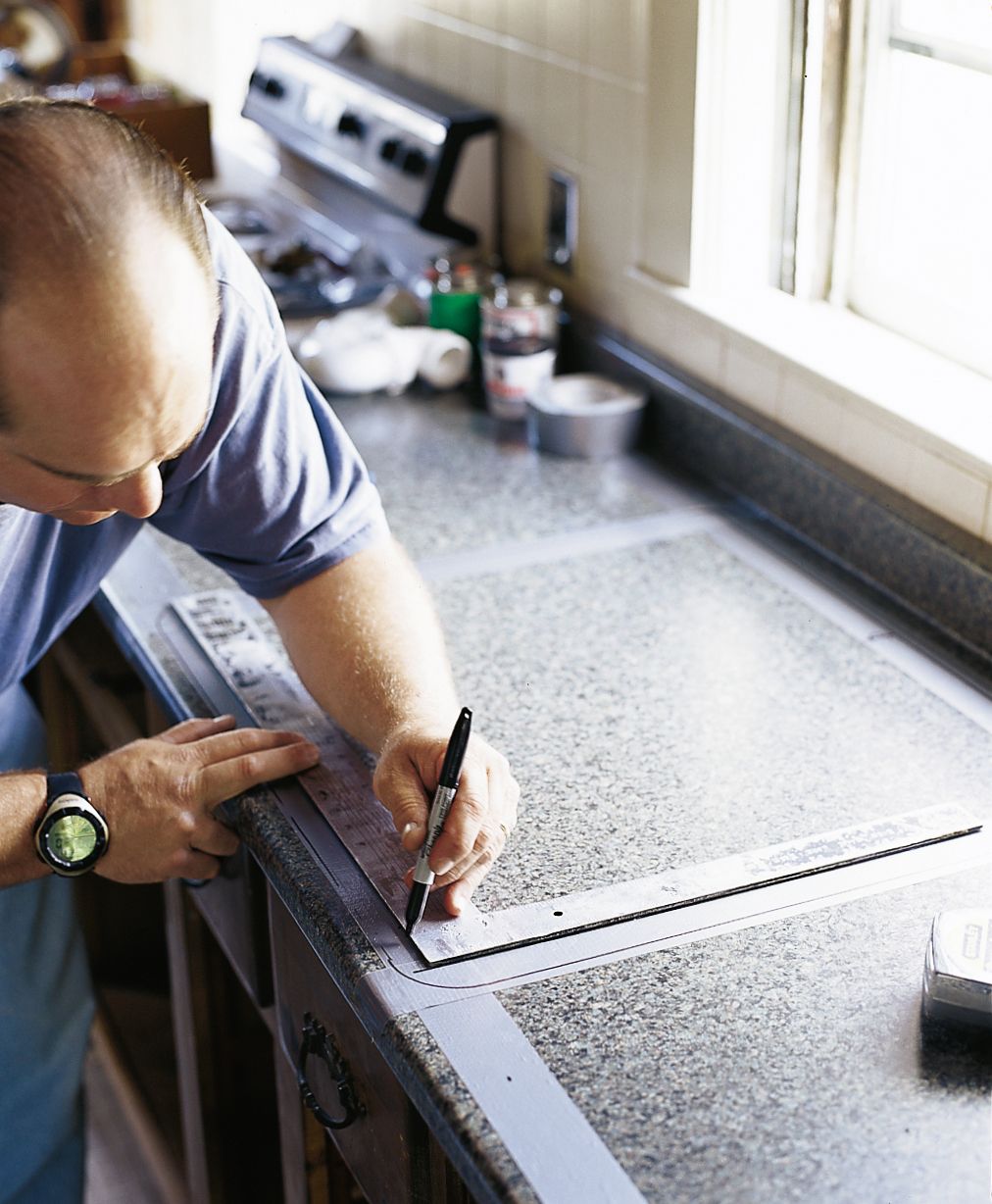
Begin by marking the counter’s back edge to center the sink within its cabinet. If your sink has a template, align it with this mark, placing its back edge one-and-one-half inches from and parallel to the counter. Trace around it to create your outline.
If your sink doesn’t have a template, you can use two-inch tape to outline the sink location. Mark the center of the sink on its back lip. Adjust the sink to leave a one-and-a-half-inch gap between its back edge and the backsplash. Make sure the sink is parallel to the counter’s edge. Trace around the sink and then remove it.
Step 2: Mark the Cut Lines
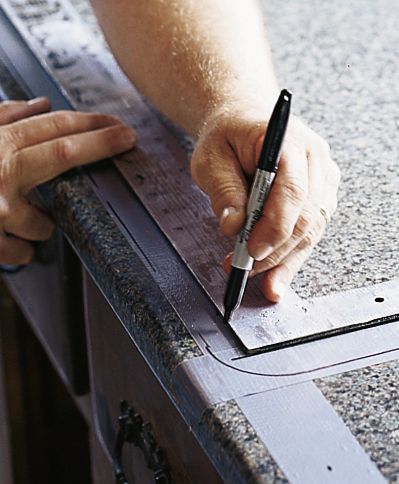
To mark the cut lines, measure the width of the sink lip and subtract 1/8 inch. Then, using this measurement, mark the inside of the sink outline. Connect these marks with a straightedge to create your cut lines. Round off the corners by hand to match the radius of the sink’s corners.
Step 3: Cut the Sink Opening with a Jigsaw
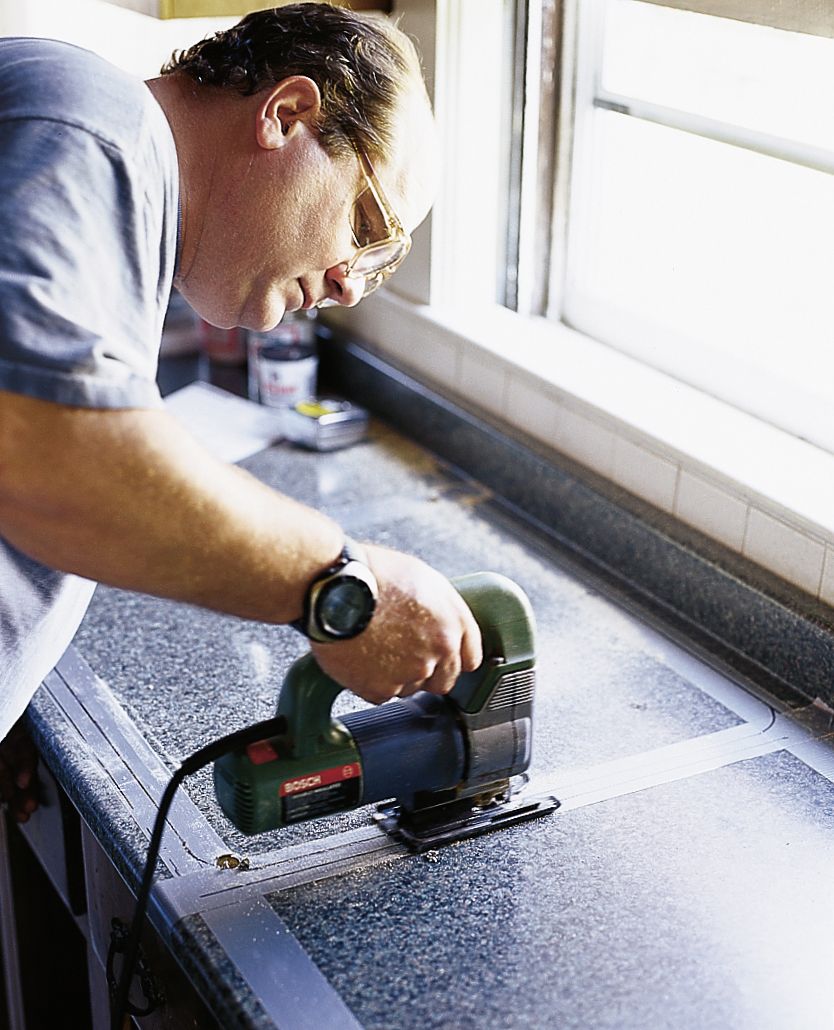
Use a spade bit slightly wider than the jigsaw blade (a half-inch bit is usually sufficient) and drill a hole inside the radius at each corner of the cut-out lines. Lay a scrap of wood a few inches longer than the cutout across the sink area. Screw through the scrap and into the cutout waste to prevent it from falling or binding the saw blade.
Insert the jigsaw blade into one of the drilled holes and carefully cut along your marked lines.
Complete the cuts on all sides and remove the cutout piece. Test-fit the sink and trim the opening if necessary.
Step 4: Install the Faucet and Sink Components
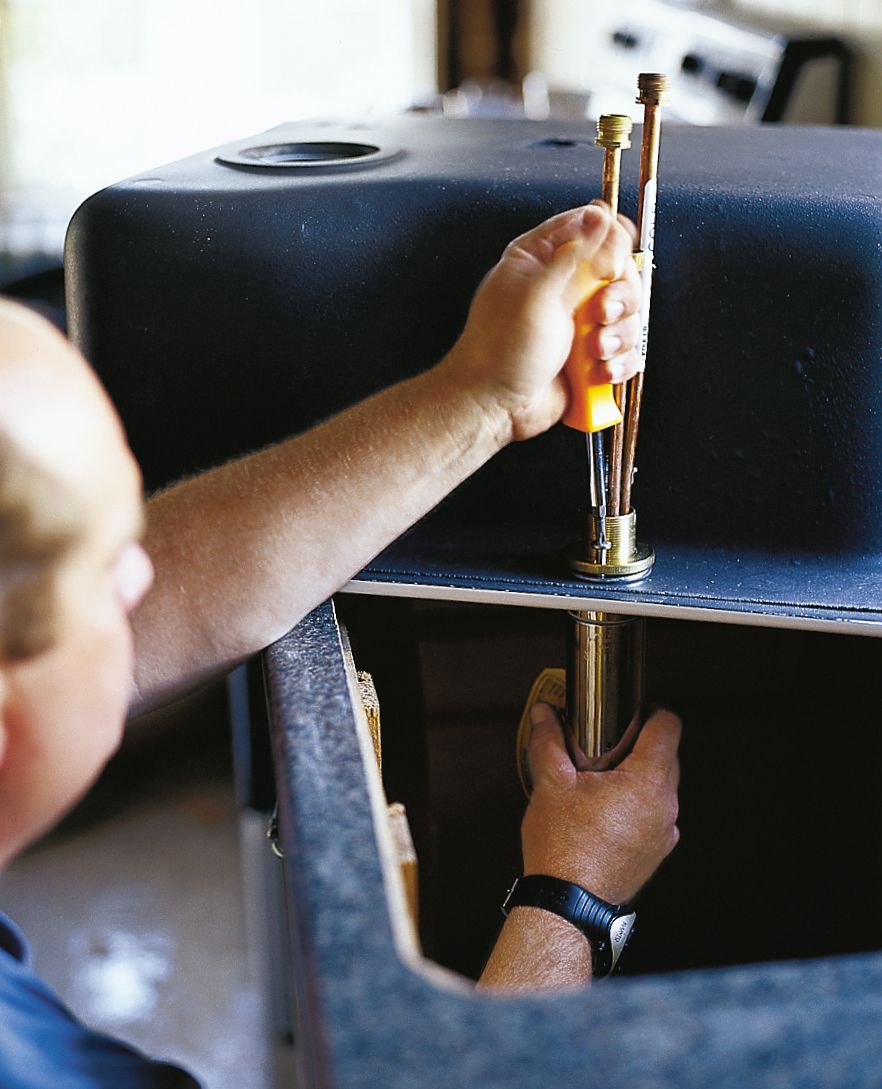
Set the sink upside down on a padded surface to protect it. Feed the faucet’s supply tubing and tailpiece through the gasket and up through the hole(s) in the sink. Secure the faucet by screwing on the mounting nuts and washers from underneath. Ensure the faucet can swing in a full arc across the sink before fully tightening the mounting nuts.
Step 5: Secure the Strainer and Drain
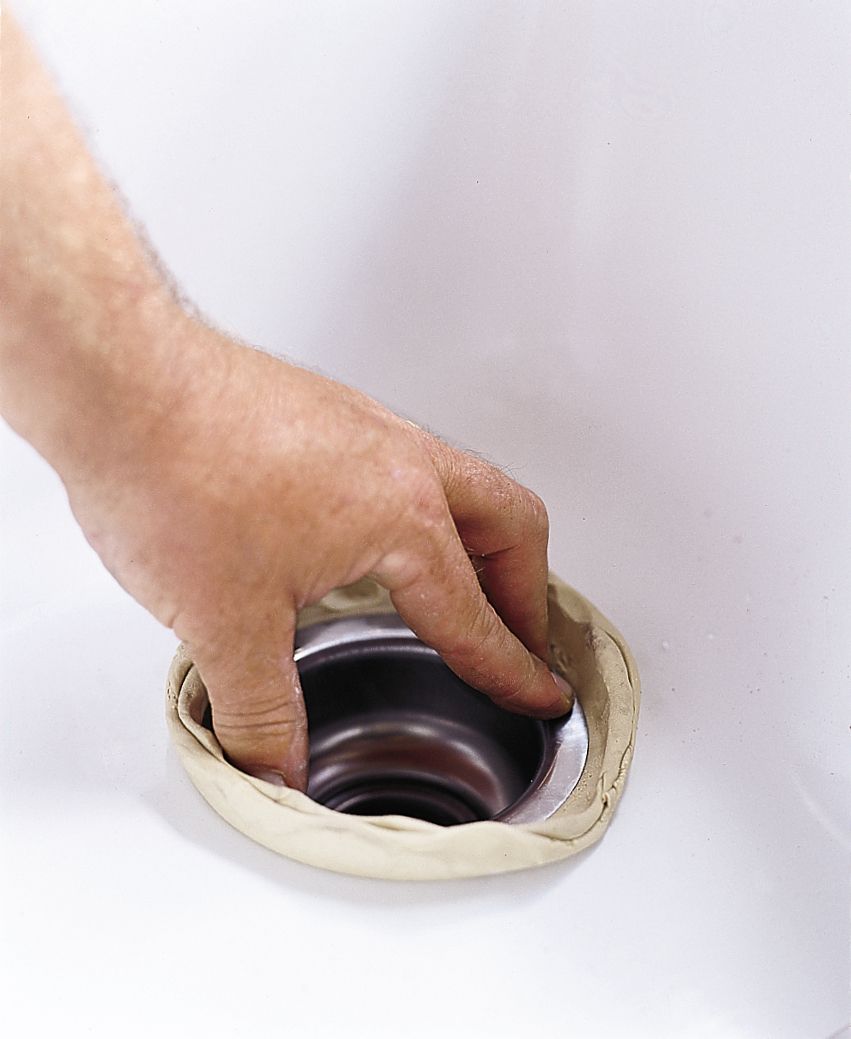
Roll a thick bead of plumber’s putty under the strainer’s lip. Push the strainer up through the sink’s drain hole. From underneath, slip on the gasket, washer, and housing (if included). Apply pipe-joint compound to the exposed threads. Thread the locknut onto the strainer by hand, then tighten with pliers while holding the strainer in place. Attach the sink-drain tailpiece to the strainer using the gasket and slip nut.
Step 6: Set the Sink and Connect the Water Supply
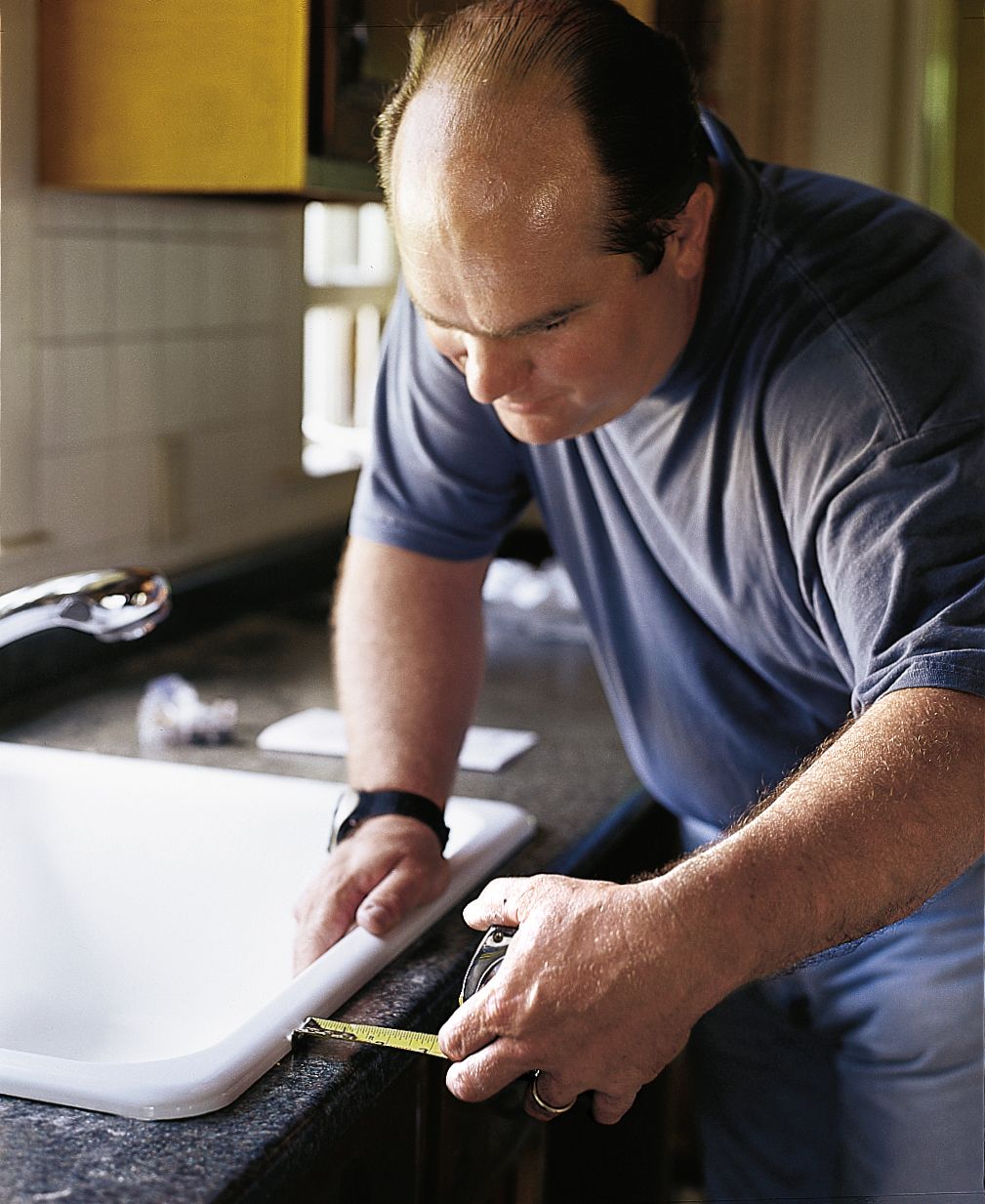
Clean the countertop area around the cut-out thoroughly. With the sink still upside down, apply a continuous bead of silicone caulk around the underside of the sink’s lip. Keep the bead even and without gaps to create a watertight seal.
Gently lower the sink into the cut-out, aligning it properly. Press down firmly to set the sink into the sealant. Check that the front of the sink is parallel to the front edge of the countertop.
If your sink model requires mounting clips, install them now according to the manufacturer’s instructions. Wipe away any excess caulk that squeezes out with a damp cloth. Allow the sealant to cure according to the manufacturer’s instructions before proceeding with plumbing connections.
After it is set, attach flexible supply lines to the faucet tailpieces. Connect the faucet to shut-off valves using acorn-head supply tubes or braided stainless steel hoses. Tighten all connections with an adjustable wrench, but be careful not to overtighten. If your faucet has a separate sprayer, attach its hose to the faucet’s threaded tailpiece.
Step 7: Install the Drain Pipes
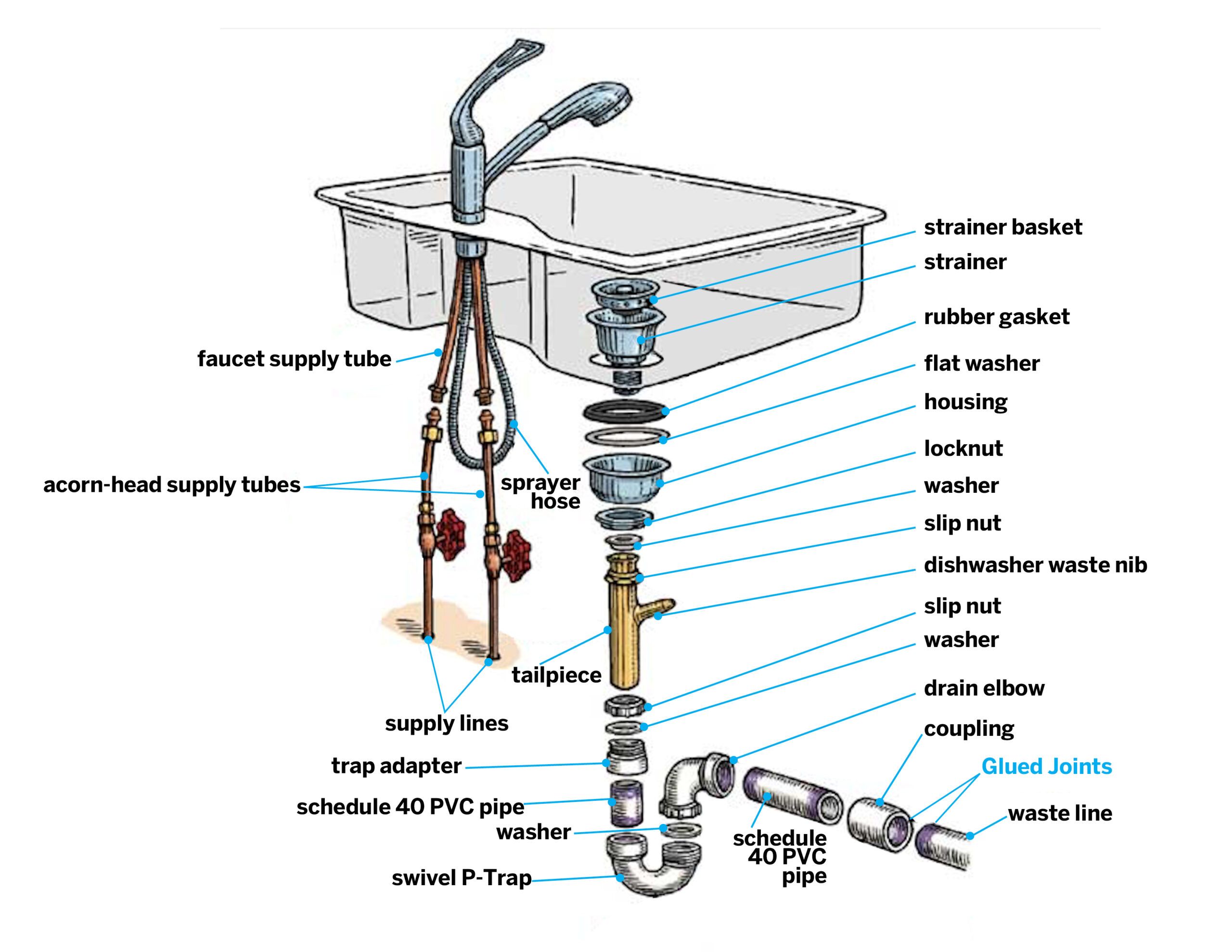
The trickiest part of installing a new sink and faucet is connecting the sink’s drain—the pieces between the sink’s tailpiece and the waste line. Always start at the sink tailpiece and work down.
Assemble the trap adapter onto the sink-drain tailpiece. Cut and dry-fit lengths of PVC pipe to connect the trap adapter to the P-trap and the drain elbow to the waste line. Adjust the trap or slide it on the tailpiece to fine-tune the pipes’ lengths and alignment. Once everything fits correctly, disassemble the pieces.
Clean the cut ends with a utility knife and apply PVC primer to all connecting parts. Apply PVC cement to both ends being joined and immediately push the pieces together, holding for 30 seconds. Reassemble all threaded connections, tightening them by hand.
Step 8: Connect the Dishwasher Drain
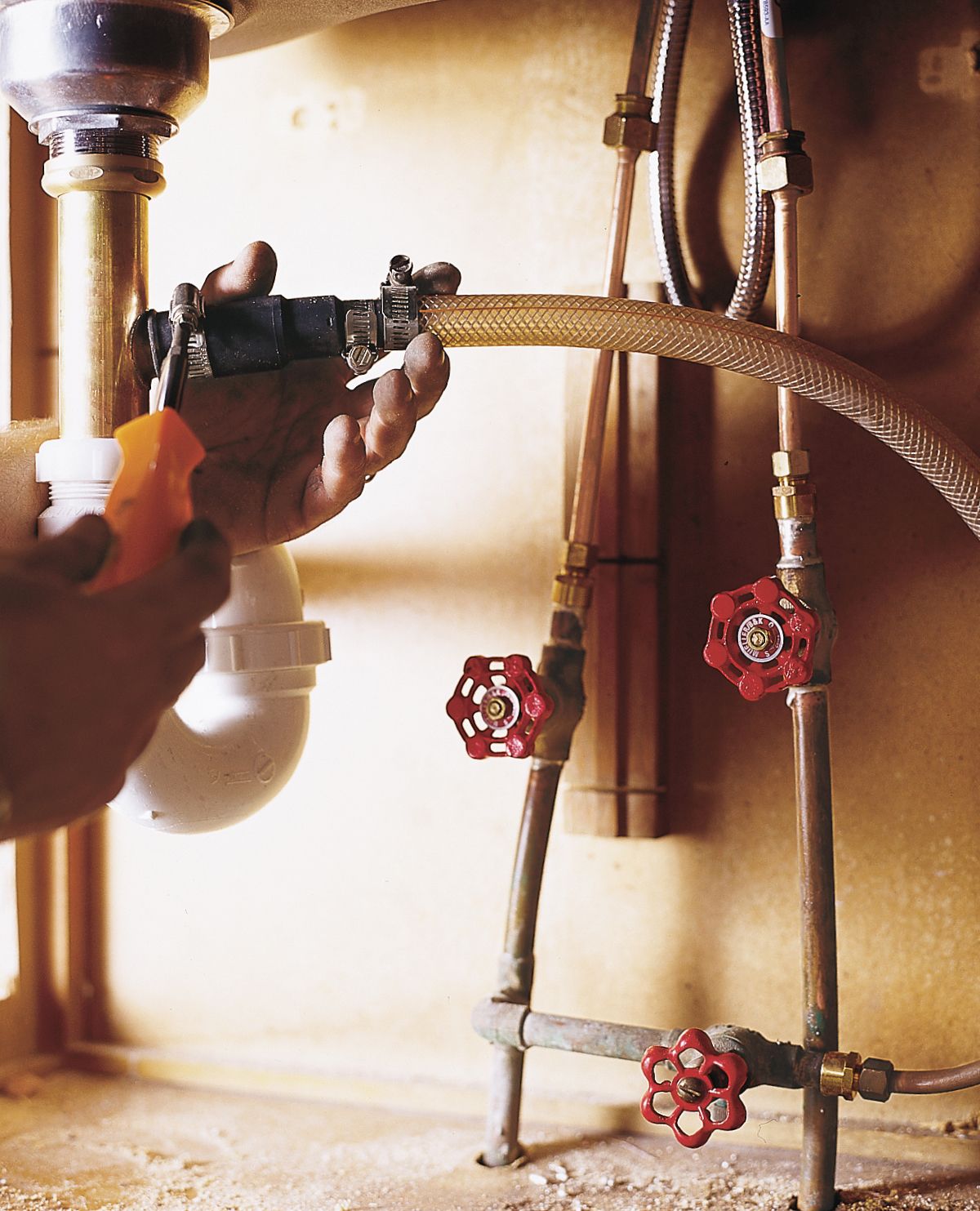
If you want to connect your dishwasher, locate the dishwasher drain connection on the sink’s tailpiece or garbage disposal. Attach the dishwasher drain hose to this connection. Secure the hose with a hose clamp, tightening it with a screwdriver. Ensure that the hose has a high loop or is connected to the underside of the countertop to prevent backflow.
Step 9: Test for Leaks
Remove the aerator from the faucet to prevent it from clogging with debris. Turn on the water supply valves slowly. Run the water at full blast and observe all connections along the supply and drain lines. If you notice any leaks, tighten the connections carefully, making one-eighth turns until the leak stops.
Fill the sink with water to check for leaks around the drain and to ensure proper drainage. Run the garbage disposal (if installed) to check for leaks and proper operation.
Make sure the sink’s front edge is parallel to the counter’s edge. Fill the sink with water to weigh it down and hold it tight overnight as the caulk sets.
DIY vs. Professional Installation of a Kitchen Sink
Deciding whether to install your kitchen sink yourself or hire a professional will depend on your skills, time, and budget. If you choose to install your kitchen sink yourself, you’ll save on labor costs. You’ll also have more flexibility in completing the project rather than relying on a professional’s availability.
However, DIY installations carry risks, particularly for those inexperienced with plumbing work. Mistakes can lead to leaks or damage, and the process can be time-consuming, especially for beginners. You may also need to invest in specialized tools to complete the plumbing installation for a new sink, which will increase project costs.
We recommend choosing a professional installation if you lack plumbing experience or the job requires significant modifications to existing plumbing. Professional plumbers will complete the installation in less time and can handle complex installations such as garbage disposal or water filtration additions. Request quotes from multiple plumbing professionals to find the best pricing.
Maintaining Your Newly Installed Kitchen Sink
Follow these simple maintenance steps to ensure your sink remains in excellent condition and to extend its lifespan:
- Avoid harsh chemicals that can damage the sink’s finish
- Clean regularly with mild soap and water
- Clean the aerator every few months to maintain good water flow
- Periodically check under the sink for signs of leaks
- Use a sink grid to protect the bottom from scratches
Our Conclusion
Transforming your kitchen with a new sink is a rewarding project that can elevate both function and style. Skilled DIY enthusiasts can often handle this project on their own, but many homeowners may prefer professional assistance. Consider hiring a licensed plumber if you’re unsure about your abilities, lack the necessary tools, or need a complex installation involving significant plumbing modifications. Whether you opt for DIY or professional installation, a new kitchen sink is a valuable investment that will improve your daily life and potentially increase your home’s value.
